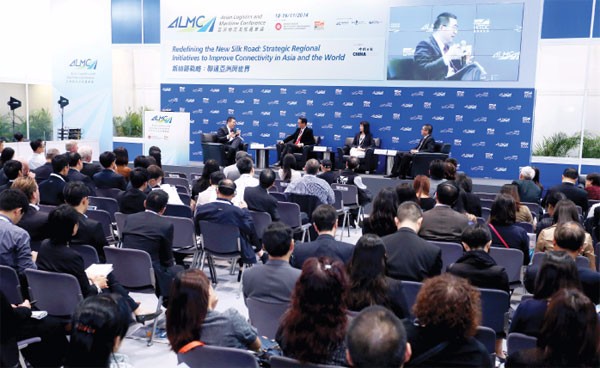2014-11-19

Industry Leaders Gathered to Explore the Profound Impact of the “New Silk Road” The mainland’s “One Belt, One Road” initiative has the potential to create greater opportunities for the logistics sector in Hong Kong, a group of panelists told a China Daily Roundtable in the SAR on Wednesday. “China has taken the initiative in launching the new Silk Road for Asia to boost economic, commercial and industrial cooperation and build the connectivity among Asian governments. We can bring more muscle to the development of the new Silk Road economic belt,” said Zhou Li, publisher and editor-in-chief of China Daily Asia Pacific. “The construction of key infrastructure projects, as well as improvement of the telecommunication system in Asia, would help China enhance its trade ties with neighboring countries and encourage overseas expansion of Chinese companies to tap markets in the region,” he told the audience at a China Daily roundtable summit featuring Asian logistics and maritime industries. China’s “One Belt, One Road” strategy, proposed by President Xi Jinping, is designed to strengthen the infrastructure along the Silk Road Economic Belt and the 21st Century Maritime Silk Road. The “belt” on land aims to promote greater connectivity between China and the central and western parts of Eurasia, whereas the “road” at sea seeks to establish closer linkage with the economies in South and Southeast Asia as well as Africa. “Following the ‘One Belt, One Road’ initiative, China has provided a lot of support to drive the development in the region, including the Silk Road Fund and Asia Infrastructure Investment Bank,” said Li Yao, chief executive officer of China-ASEAN Investment Cooperation Fund (CAF), adding that Xi has also been promoting the idea of a Free Trade Area in the Asia-Pacific. “Our fund, which was established five years ago, focuses on the Silk Road connectivity and industrial cooperation. Logistics is crucial to the development of the region. More importantly, we strive to bring together commercial returns and social impact, which we believe is a ‘must-do’ task for all forces in the business community who want to make real contributions to developing countries,” Li said. Vivien Lau, managing director of Hong Kong Air Cargo Industry Services Ltd, said: “The new Silk Road focuses on building more roads, railways, ports and airports across the region. It provides opportunities for the logistics sector in Asia, especially Hong Kong. One belt and one road can connect all the businesses involved in the supply chain by eliminating unnecessary trade barriers to make the trading process shorter and easier. With all the connectivity and network in place, the initiatives will speed up the movement of goods and encourage people to set up trans-national presence in Asia.” The New Silk Road is a major opportunity for at least the next 10 to 15 years, said Gordon Lam, chief representative and general manager for southern China at Li & Fung Development (China) Ltd. “The combined economies along the road represents a huge population and a significant market not only for Hong Kong but also Asian countries in the coming years. In the old days, traders in Hong Kong sourced from the Chinese mainland and other parts of Asia for export to the US and European markets. Nowadays, we are sourcing from everywhere and bring the goods back to the region. The global value chain has been shifted,” Lam added. ### About China Daily Asia Leadership Roundtable The China Daily Asia Leadership Roundtable is a by-invitation network of movers and shakers in Asia providing platforms for focused dialogue, issue investigation, and possible collective action on strategic issues relating to economic, business and social development in Asia. Our aim is to enhance communication and increase mutual understanding between China, Asian and Western countries. Roundtable events are held in major cities across Asia.